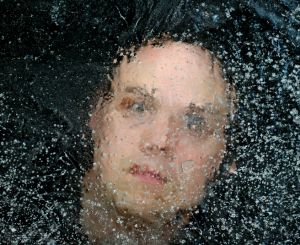 Not too long ago, cremation was still considered an alternative means of caring for a loved one's body after death. In recent decades, however, there has been an explosion of choice regarding how to manage one's remains. While burial and cremation hold steady as the most popular funeral arrangements, more and more people are opting for unusual and diverse means of saying goodbye. The following are five modern alternatives to traditional ceremonies.
Not too long ago, cremation was still considered an alternative means of caring for a loved one's body after death. In recent decades, however, there has been an explosion of choice regarding how to manage one's remains. While burial and cremation hold steady as the most popular funeral arrangements, more and more people are opting for unusual and diverse means of saying goodbye. The following are five modern alternatives to traditional ceremonies.
Cryonics
Cryonics may sound like the stuff of science fiction. However, for those people with money to burn or freeze cryonics offers the hope of living on beyond what most ordinary people would consider the end. Someday, a wealthy and determined minority holds, science will discover how to bring them back, good as new. The Cryonics Institute reports that as of August 2011, 200 individuals were on ice waiting for medicine to catch up. Preservation and storage currently runs around $200,000, but the budget-minded can freeze only a head for around $80,000.
Lost in Space
Like that sci-fi vibe, but lack the capital for the deep freeze? Not to worry: a space burial can be arranged. You can have a portion of your or a loved one's ashes shot into space, riding shotgun on a rocket previously scheduled for travel. It is, in fact, a very small portion of a body's remains that gets to live forever amongst the stars: up to one quarter ounce of cremation ashes can make the trip. The range of post-mortem experience depends on what you want to spend. To orbit the Green Marble and burn up in the atmosphere will run you around $3,000. A launch into deep space costs between $10,000 and $12,000. For about $995 ashes can enter a low-orbit range in zero gravity, then return to Earth.
Lie Like an Egyptian
In 1975, a religious organization known as Summum began to offer mummification to human beings and pets. Founder Corky Ra died in 2008, and underwent the mummification process, a procedure that is remarkably unchanged from that of the ancient Egyptians. Before his death, Ra told CBS News that over 1,400 individuals had committed to mummification by the organization. According to Ra, the cost for a person to be mummified is approximately $63,000. People who choose to undergo the process believe that their preserved DNA may be able to be revived and possibly cloned. Ra's mummified remains await just such a development in a bronze case in a pyramid in Salt Lake City, Utah.
In the Name of Science
Anatomist Gunther von Hagens invented the process known as plastination to preserve bodies for use in anatomy labs, and for a purpose much more public. Hagens uses plastination to "freeze" bodies seemingly in motion, for public exhibition, and in service to education. The Institute for Plastination reports that thousands of people have expressed interest in donating their bodies for display.
Not Just for Coffee Anymore
The official word for funeral freeze-drying is Promession. Susanne Wiigh-Masak is the Swedish marine biologist who invented it. To become freeze dried, a body is submerged in liquid nitrogen, whereupon it becomes extremely fragile. A vacuum chamber shakes the body and helps to evaporate the water. Next, a separator removes metallic or foreign objects from the remains, and the resultant powder is buried in a shallow grave. From there the body becomes compost. Or it will, as soon as the first person undergoes a promession. Promessa is the company that developed and is promoting the service; it is licensed for business in the United Kingdom. Green burials are more prevalent in Great Britain than in the United States, but companies such as Promessa are betting that ecologically minded funeral arrangements will continue to be a growing trend on both sides of the pond.
Add Your Comment